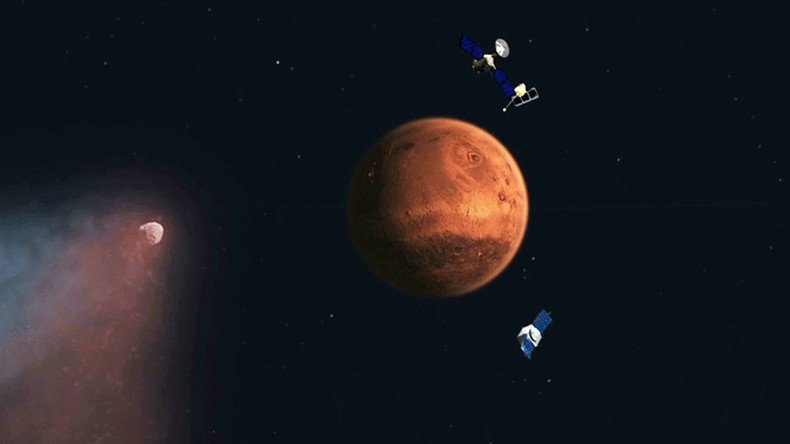‘Martian’ meteorites smashed open to prove Red Planet was wetter than we thought

Research into simulated Martian meteorites indicates that Mars was once far wetter than we thought. The implications of this study are huge as it not only means that Mars could have supported life in the past, but could potentially do so again in future.
Scientists have long studied whether Mars held any substantial bodies of water as this would definitively prove that the planet was once at least capable of supporting life, even if life never actually fully formed.
Mars is roughly the same age as the Earth (4.6 billion years), and yet the two planets look vastly different for their age at present (one covered in water and teeming with life, the other cold, barren and deserted).
Scientists propose that a major impact (similar to the one that wiped out the dinosaurs here on Earth) not only blasted chunks of Mars into space, forming the meteorites we study today, but that this impact also punctured Mars’ atmosphere, which has been leaking away into the void of space ever since.
READ MORE: Amazon boss wants to start delivery service to the Moon
Scientists at the University of Nevada, Las Vegas (UNLV) led an international team which conducted extremely high pressure ‘shock compression’ experiments on the mineral whitlockite, which is rich in hydrogen and which they think existed on Mars before a major impact blasted the material into space.
They found that after simulating the ejection of such meteorites from Mars’ atmosphere, when examined at the microscopic level in X-ray experiments at Berkeley Lab’s Advanced Light Source (ALS) and at Argonne National Laboratory’s Advanced Photon Source (APS), the mineral dehydrated to such an extent that it transformed into Merrillite, a mineral commonly found in Martian meteorites that does not occur naturally on Earth.
The experiments consisted of blasting whitlockite samples with pieces of metal fired from an extremely highly pressurized gun at a speed of roughly 1,678mph (2,700kph).
Incredible high-def images show ancient flooding remnants on #Marshttps://t.co/bCxNxYyHlg#spacepic.twitter.com/2JRytkMGrL
— RT (@RT_com) March 2, 2017
“If even a part of merrillite had been whitlockite before, it changes the water budget of Mars dramatically,” said Oliver Tschauner, a professor of research in the Department of Geoscience at UNLV, in a press release.
“It’s really important to get a rock that hasn’t been ‘kicked’ like the Martian meteorites have," said Martin Kunz, a staff scientist at Berkeley Lab’s ALS, who examined the shocked whitlockite samples.
Research into such minerals will continue and the team hopes to examine material from the surface of the Red Planet itself in the future.












